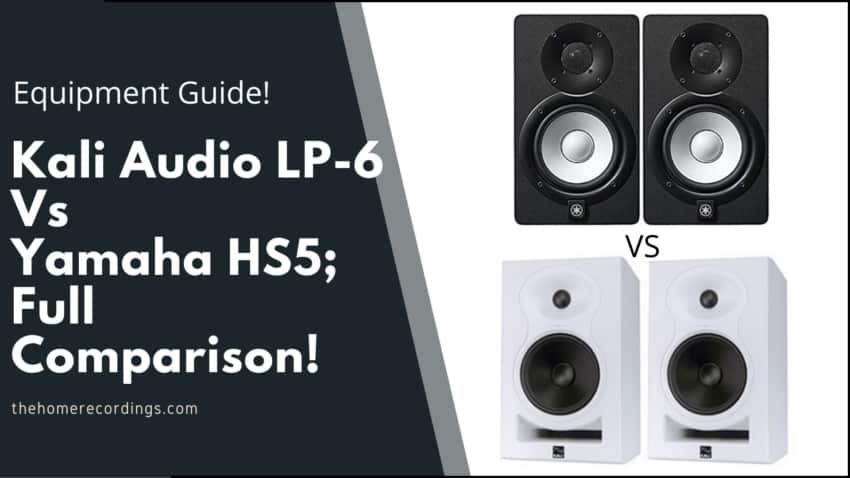Last updated on December 30th, 2023 at 02:57 pm
The Yamaha HS5’s are the little brothers of the famous Yamaha HS8 studio monitors, which have been a staple in the recording industry for years.
The Kali LP-6 are newly released monitors that are making quite the name for themselves because of how great they sound, all the features they provide, and how little they cost.
In this article, I will be going over the differences between the Yamaha HS5 and the Kali LP-6, their build quality, how they sound, how much they cost, and which ones I think you should get.
So, without any further ado, let’s get started!
Differences between the Kali Audio LP-6 and Yamaha HS5 monitors
The Yamaha HS5 monitors have a 5” woofer, a more pronounced mid- and high end, and they don’t give you much EQ control to adapt them to the room, whereas the Kali LP-6 have a 6.5” woofer and the bass reflex port on the front, which means that they can reproduce the bass frequencies a lot better, they sound overall more balanced and have many EQ switches to shape the sound.
Kali LP-6
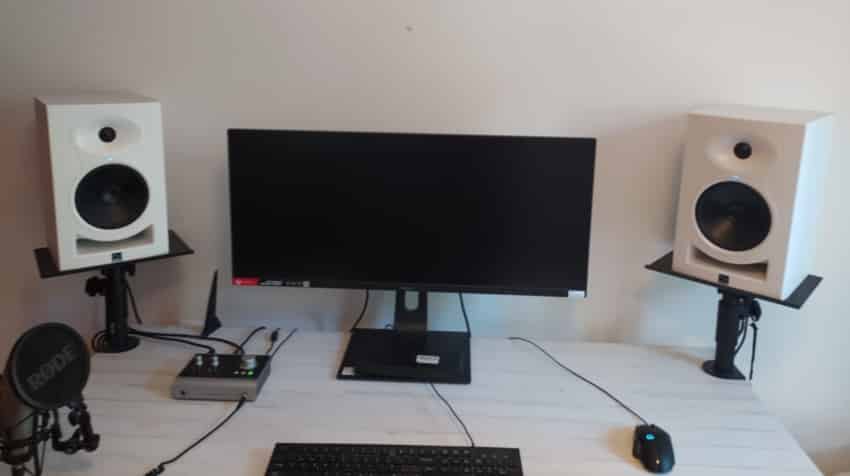
I first got the Kali LP-6 about a year ago and I have to say that I was extremely surprised at their size, since they are much bigger than most other monitors with 6.5” drivers, not to mention 5”-driver monitors, like the Yamaha HS5, Adam T5V, etc., plus they have the bass reflex port on the front, which makes them even bigger.
I got the white ones, because they look much nicer, and set them up on some studio monitor stands.
Quick Note: If possible, always use studio monitor stands. I tried these monitors, as well as many others, by having them set up right on my desk and they sound terrible when compared to how they sound using stands. Just make sure to have the tweeter at ear-height and to point them towards you.
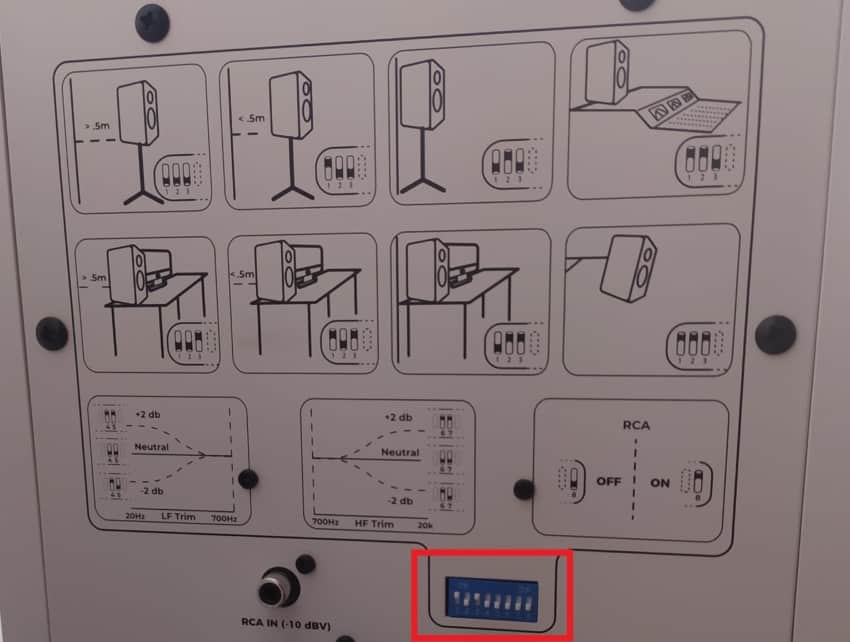
On the back they have a gain control and small EQ switches which allow you to tailor the frequency response to the room, and you can do that by simply following the pictures on the back of the monitors which give you a visual representation of how to adjust those switches depending on where the monitors are positioned.
Build Quality
The Kali LP-6 are definitely built to last: They are extremely solid, heavy, and they seem to be very well put together, so I wouldn’t worry about them breaking on you any time soon unless you treat them poorly.
However, and I will touch on this later on when covering the Yamaha speakers, those are actually built even better.
Connectivity
- 1x XLR.
- 1x TRS.
- 1x RCA.
I am currently using a TRS connection since my Audient iD14 doesn’t come with XLR outputs, but no matter what interface you have, you can definitely connect to the LP-6 without any issues.
Sound Quality
The word I would use to describe the Kali LP-6 is balanced. They don’t have any notorious issues as far as frequency response goes where some may be poking their head out a little too much, which means that they are quite flat-sounding.
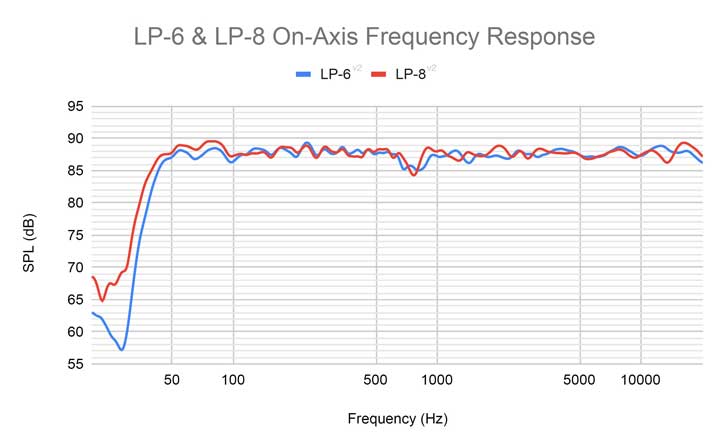
This is something that other monitors don’t do that well, such as the Yamaha HS8, or even the HS5 which I’m comparing the LP-6s to right now, since those tend to have a much more boosted mid-range. Although it’s worth mentioning that that’s on purpose, since the mid-range is a generally problematic area, and having it more emphasized can help you identify problems more quickly.
Generally speaking, sounding balanced, or “flat”, is a very desired quality in studio monitors, and the LP-6 definite have that quality.
I use them for mixing, general music listening, watching movies, etc., and aside from sometimes not being able to hear the very low end properly in some cases, which might be caused by a lack of proper positioning or some issues with my acoustic treatment, or lack thereof because I just moved, I wouldn’t blame the monitors on that just yet.
Price Tag
I’ll just mention this now, but the Kali LP-6 are a bit more affordable than the Yamaha HS5’s, selling at about $200 depending on the retailer, or even closer to the $180 mark.
- You can get the Kali LP-6 here: Amazon, Sweetwater.
Both of these monitors are part of my list of the best Studio Monitors under $300 that you should also check out!
Yamaha HS5
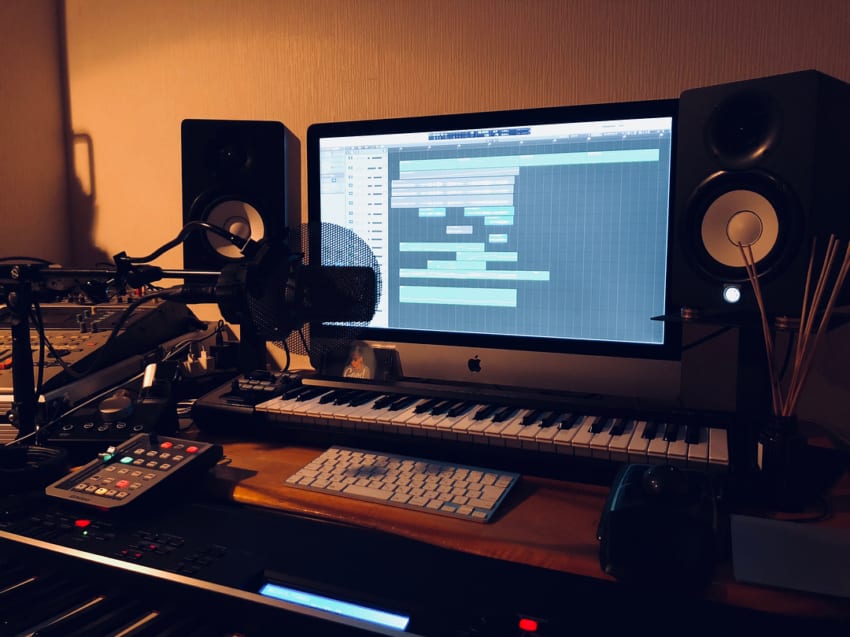
The Yamaha HS5 are near-field monitors with a 5” woofer and a 1” tweeter. Their bigger brother, the HS8’s, have been an industry standard for years now, but not because of how great or flat they sound, but because they accentuate problematic areas in the mix (mids and upper mids), which allows you to have a more critical listen of those frequencies to be able to fix them.
Essentially, if a mix sounds great on the Yamaha HS5’s, 7’s or 8’s, it sounds great anywhere!
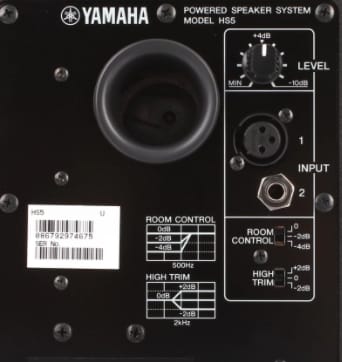
Where the HS5’s differ from the Kali monitors, aside from the bigger woofer and that they have the bass reflex port on the back instead of the front, is that they don’t allow for as much tone shaping like the LP-6’s since they only feature +2dB to -2dB High Trim (at 2kHz) and Room Control (at 500Hz).
This means that you won’t be able to adapt the monitors to your room as easily as with the Kali LP-6.
Build Quality
Although not by much, the Yamaha HS5 monitors exceed the build quality of the Kali LP-6’s slightly: They are built like an absolute tank, the Control Room and High Trim switches feel firm, and the level knob has absolute no play in it.
Connectivity
- 1x XLR.
- 1x TRS.
Note: No RCA.
Sound Quality
I just mentioned that the Kali LP-6 sound balanced, or flat. Well, that’s not really the case with the HS5’s.
Don’t get me wrong, they sound great! But the mid range is a bit more pronounced and so is the high end, plus having a 5” woofer means that they can’t reproduce as much low end as the Kali monitors since those have a 6.5” woofer.
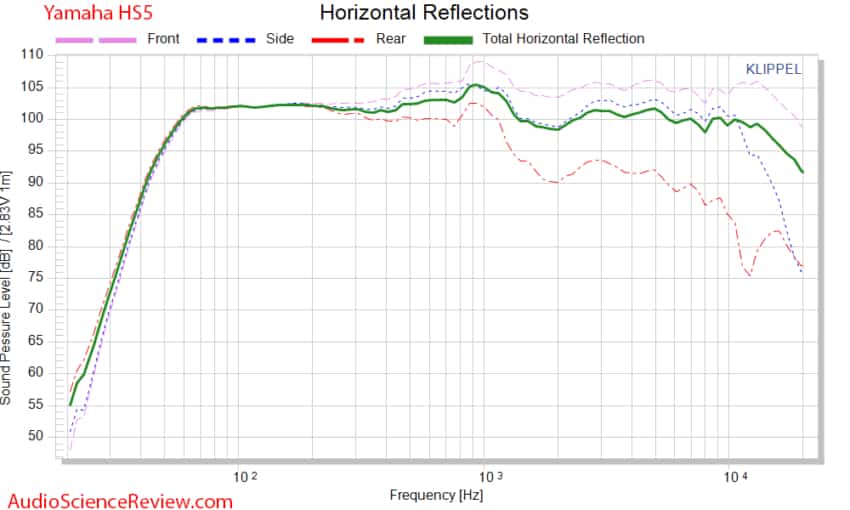
Essentially, one could say that these sound a bit more exciting, although a bit hyphy maybe, and the LP-6 sound more balanced but boring.
For music production, general music listening, watching movies, etc., they work really well, but remember that the low end might not be as prominent as the mids and highs.
Price Tag
Generally speaking, the Yamaha HS5 monitors are a bit more expensive than the Kali Audio LP-6, although their price seems to be dropping a little, at least from what I’ve seen.
You should be able to get a pair for about $400, so $200 each.
- You can get the Yamaha HS5 here: Amazon, Sweetwater.
Overall Impressions & recommendation
I think that the Kali LP-6 take the win here; They offer much more EQ control to adjust the monitors to your room, they have a bigger woofer, they sound flatter, which is something you usually want when mixing & mastering, and they cost less.
Of course, the HS5’s are still great monitors, and if you can get your mix to sound great on those, it will sound fantastic everywhere else, but I don’t think that they are as well-rounded as the LP-6.
I hope this information was useful.
Have a nice day!
